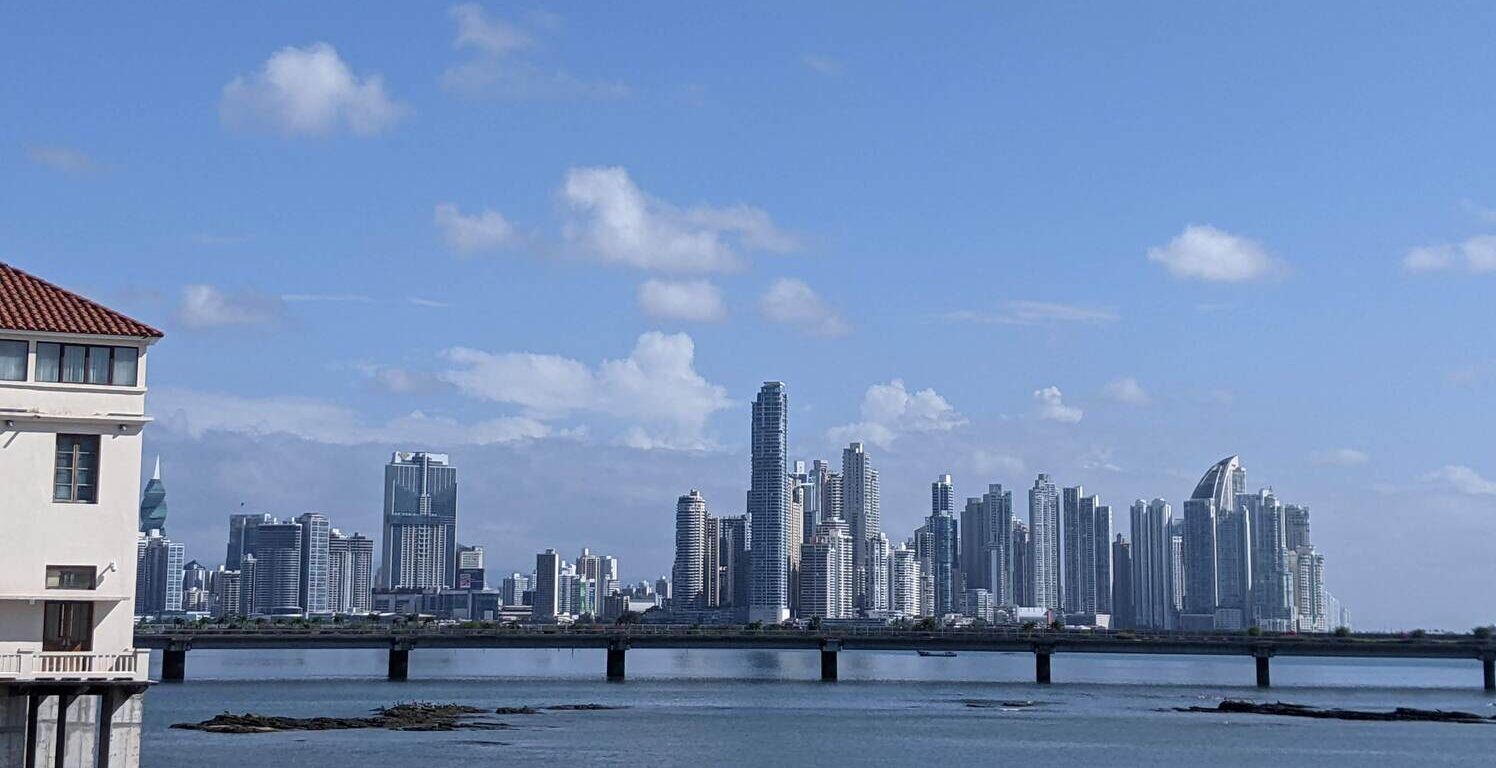Panamá is one of the wealthiest countries in Central America. The gorgeous skyline of its capital, Panama City, reminded me of Singapore. Beyond that, there isn’t much to do in the city. The Panama Canal, in my opinion, is a bit overhyped for tourism. I had a much better experience seeing the locks in Seattle and going through locks in Stockholm.
Major areas to visit in Panamá
- San Blas Islands - gorgeous islands that are equivalent to mini-French Polynesia
- Boquete - Gorgeous small town in the highlands
- Bocas Del Toro - Caribbean vibe, I decided to skip this
- Darien National Park - It is filled with Narcos and human traffickers. I skipped it this time.

Day 1 - Panamá City
Start the day with a walking tour of the city’s Old Quarter, “Casco Viejo”. It is gorgeous, similar to Antigua.


Afterward, climb the Ancon Hill, “Cerro Ancon”. It is a very well-marked drawn-out 30-minute hike that gives you a good view of The Bridge of the Americas that goes over the Panamá Canal.

Afterward, visit Metropolitan Park. There is a 4$ entry fee. The park is interesting, but you won’t lose a lot by skipping it.


Day 2 - San Blas Islands
San Blas Islands are gorgeous islands on the Northwestern coast of Panamá. The islands are inhabited by the semi-autonomous Guna tribe. The tribe has resisted modernization, so, amenities on the islands aren’t great. And since only tribesmen can work on these islands, the hospitality is sub-par as well. However, the views are still idyllic.
There are multiple ways to do San Blas Islands. Some people drive to Puerto De Carti and then get a boat there. Some take a one-way $30 shared taxi and then book an Airbnb on the island that includes the boat. The most comfortable option I chose was to book a tour that included cab pickup and dropoff, a boat ride to the island, a night stay, and a trip to two other islands.
The trip starts early morning, around 5 AM, with a drive to Puerto De Carti. On the previous night, buy ~5L cans of water and packaged food like Biscuits, as food on the islands is expensive. Further, if you have dietary restrictions, like vegetarian, the meals served on the island can feel a bit limiting.

The 45-minute boat ride is almost guaranteed to drench you. So, keep your phone and passport in waterproof pockets. The islands are gorgeous. And I loved snorkeling around the island for the day. We played volleyball in the evening as well.


In the afternoon, we visited a natural pool and then went to a small island (probably Isla Perro).


The views of the night sky are gorgeous as well. Depending on the island, you are on, the phone charging might or might not be available and might not even be free, so, I would recommend carrying a battery pack.
Day 3 - San Blas Islands
I had a fruit-only breakfast as that was the only vegetarian option. And then I did more snorkeling in the morning. After a rice and beans lunch, I left for the Isla Naranjo Chico island and from there took the boat back to the mainland. The boat ride back was much smoother.

At night, I took an overnight 6-hour bus to David and then a 1-hour bus to Boquete. The standard 6-hour Panamá -> David bus costs about 15$. At night the only option is an express bus that’s 18$ one-way. The 1.75$ bus between Panamá and David starts early in the morning (5 AM) and runs late into the night (1:30 AM). However, the connectivity between David and Boquete is only between 6 AM to 8 PM.
Day 4 - Boquete
Boquete is a small, quaint mountain town. It is the closest one can feel similar to Antigua, Guatemala in Panamá. I walked along its main route to see Los Ladrillos rock formations and San Ramon waterfalls. Then I did the ~40-minute pipeline waterfall hike. You have to pay 5$ at the entrance here.





Day 5 - Vúlcan Barú hike
I started this hike early in the morning around 5 AM. A 6$ shared taxi will drop you at the starting point. One needs permission to do this hike by emailing rcastillo[AT]miambiente.gob.pa and get a confirmation email. The walk is about 17 miles. I would put this in the same category as the Half Dome hike. Though it is much less scenic and much more brutal on the legs. It takes about 5 hours to reach the top. On a clear day, one can see the Pacific and Atlantic Oceans from the top.
There are several mile markers on the way.

And I spotted a zipline too.


And I reached the top almost 5 hours into it.


Note:
- Panamá uses USD as its currency notes. For $1 or less, Panamá uses its own Balboa coins that are pegged to the USD.
- Credit cards are widely accepted.
- There is a nice metro with two lines L1 and L2 that runs through Panamá city. It does not connect to the airport yet. But there is a 25-cent bus that connects the airport’s Terminal 1 to the metro. One needs a special transport card to pay for it. So, find a local and pay them in USD quarter instead of the payment.
- There isn’t distinct Panamanian food.
- Uber is cheap and relatively easily available.
